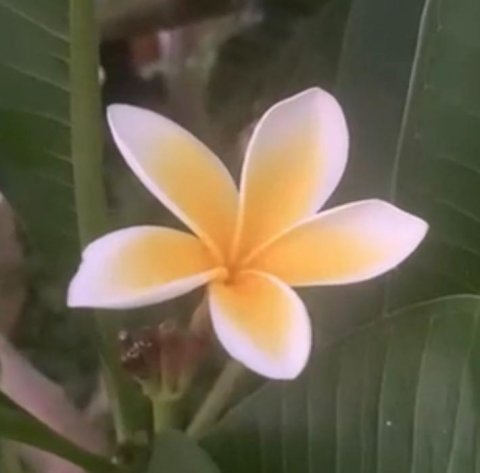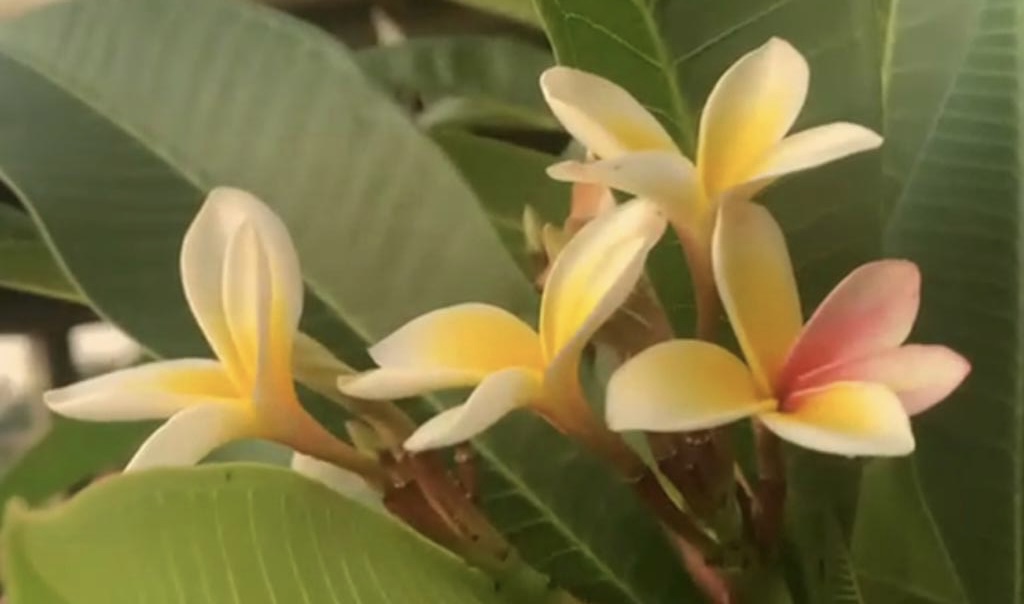We hadn't had a normal winter in years. 2022 begged to differ. I don't complain about cold but my garden suffered. When spring was finally here and the temperatures rose, I started caring and watering more, to make sure all plants, shrubs, and trees were well taken care of and had their needs in nutrients covered. I planted 2 plumeria trees when I moved in. The small one, white colored, was rather robust and bloomed after a short time. The taller tree was supposed to bloom darker pink flowers and I had given up seeing it flower even once, when it finally did, in 2021. This year after about 6 weeks of good weather, the white plumeria tree started blooming again. The other tree is still just producing green leaves to date.
Hereafter are some tips to grow and care for your plumerias:
- Plumerias are native to Central America and have been spread to other tropical climates. They don't like the cold and the shade and enjoy several hours of sun exposure a day
- They require a well draining acidic soil and to be watered weekly, especially when it's hot
- In spring, I usually add phosphate fertilizer, once or twice, to their soil to assist in their growth. Avoid giving the plumeria too much nitrogen: it will make the tree/shrub grow foliage but fewer flowers
- Pruning the plumerias helps remove dead branches and control their size. Do it in the early spring days when it has not started its growth or in winter, when it is dormant. The dormancy takes place when it's around 10 degrees Celsius only. The plumeria may then shed its leaves. Mine have both done so each year. My small shrub has grown exponentially within a few weeks and this calls for a good trimming already!
- Plumerias are self-pollinating, with both male and female flowers on the same plant
- Pests such as bugs or spiders can be hosed down from the tree/shrub. I always go for the natural solution before resorting to chemicals. If you notice some leaves turning orange and having blisters, this is rust fungus. You must treat the tree/shrub with a fungicide.
Plumerias blossom in different colors and shades, from white, and pink, to yellow, orange, or even red. Some flowers have multiple colors. In many countries, plumerias are processed into perfume, brewed tea, and mosquito repellent. They also can treat diabetes and ulcers, and heal inflammation. They might help regulate your digestion and could be used as a natural antibiotic! If your feet's skin is cracked, try using plumeria leaves to smoothen out the skin. You can also use the plumeria flowers to decorate your home... or your hair.
Plumerias are a symbol of new beginnings. In some cultures, when the woman wears the flower behind her right ear, she is stating that she is single. Whereas when it is placed behind her left ear, it implied she had a partner. In Buddhism, plumeria flowers are a sign of immortality. And it illustrates devotion and commitment in Hinduism. In Mexican mythology, the plumeria flower led to the birth of the gods. It embodies life and rebirth in the Mayan civilization...
Now that you know all this about plumerias, I bet you want to have one in your home too!
Happy Gardening 🌱


